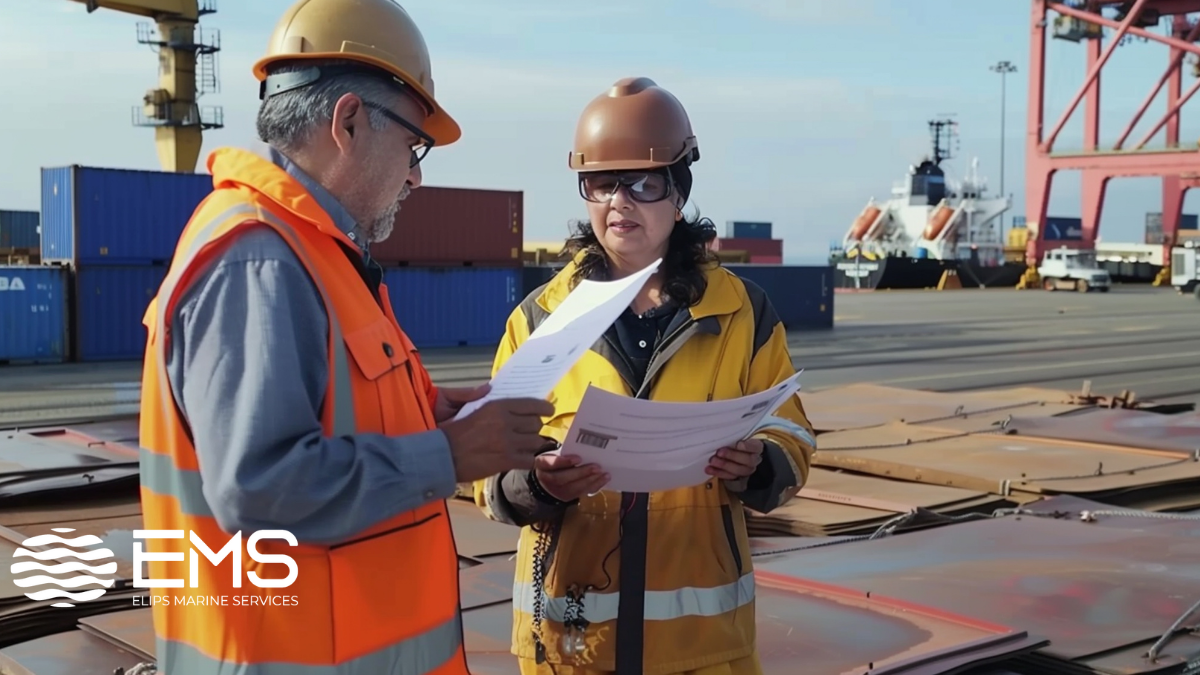In the maritime industry, ensuring the safety, structural integrity, and compliance of vessels is of paramount importance. Ships operate in some of the world’s harshest environments, and regular inspections are essential to identifying potential issues before they become major problems. Among the most critical services in this realm are comprehensive ship inspections and UTM-NDT services (Ultrasonic Thickness Measurement and Non-Destructive Testing), both of which play a vital role in maintaining the health of a vessel and ensuring its compliance with maritime regulations.
This blog explores the significance of these services and how they contribute to maritime safety.
The Importance of Regular Ship Inspections
Ships are constantly exposed to a range of elements that can cause wear and tear over time. Saltwater, heavy loads, extreme temperatures, and harsh weather conditions all take their toll on the vessel’s structure. Regular ship inspections are designed to assess the condition of key components, ensuring that they are in good working order and identifying any areas of concern that need attention.
Comprehensive ship inspections include:
- Hull inspections to check for corrosion, cracks, and other structural issues.
- Machinery inspections to ensure engines, boilers, and other mechanical components are functioning optimally.
- Tank inspections to assess the condition of fuel, ballast, and cargo tanks, preventing leaks or contamination.
- Electrical inspections to verify that electrical systems meet safety standards and are functioning reliably.
These inspections are not only important for maintaining the operational efficiency of a ship but are also a legal requirement. Compliance with international regulations, such as those set by the International Maritime Organization (IMO) and classification societies, ensures that vessels meet the highest standards of safety and environmental protection.
Failing to conduct regular inspections can lead to expensive repairs, lengthy downtime, or even catastrophic failures that put lives, cargo, and the environment at risk.
Ultrasonic Thickness Measurement (UTM) and Its Role in Safety
Ultrasonic Thickness Measurement (UTM) is a crucial tool used to evaluate the thickness of a ship’s structure, particularly the hull, and detect any areas where thinning may be occurring due to corrosion or wear. This non-invasive method involves sending ultrasonic waves through the material, measuring the time it takes for them to reflect back, and calculating the thickness based on these measurements.
UTM is particularly valuable because it provides precise data without damaging the material being inspected. This allows shipowners to:
- Monitor the condition of the hull and other structural components.
- Detect corrosion at an early stage, preventing more serious damage.
- Plan for repairs or replacements well in advance, avoiding costly emergency fixes.
- Ensure compliance with classification society requirements.
By regularly conducting UTM, shipowners can proactively address issues related to hull integrity, ensuring the vessel remains seaworthy and compliant with international standards. This service is especially important for older vessels, where the risk of corrosion and material degradation is higher.
The Role of Non-Destructive Testing (NDT)
In addition to UTM, Non-Destructive Testing (NDT) encompasses a range of techniques used to assess the condition of a ship’s materials and components without causing any damage. NDT methods include:
- Magnetic Particle Testing (MPT): Detects surface and near-surface defects in ferromagnetic materials, such as cracks or weld defects.
- Liquid Penetrant Testing (LPT): Used to identify surface-breaking defects in non-porous materials by applying a liquid dye to the surface.
- Radiographic Testing (RT): Involves using X-rays or gamma rays to inspect the internal structure of materials for defects.
- Eddy Current Testing (ECT): Detects cracks and material thickness variations using electromagnetic induction.
Each of these methods serves a specific purpose and is used depending on the material and the type of defect being investigated. NDT allows for thorough inspections without compromising the integrity of the ship’s components, making it an invaluable tool for maritime safety.
By combining UTM with other NDT methods, shipowners gain a comprehensive understanding of their vessel’s structural health, allowing them to make informed decisions about repairs, maintenance, and overall ship management.
Ensuring Compliance with Maritime Regulations
International maritime regulations require vessels to undergo periodic inspections and testing to ensure safety and environmental standards are met. Classification societies, such as Lloyd’s Register, Bureau Veritas, and DNV GL, have specific requirements for ship inspections, including the use of UTM and NDT techniques.
Compliance with these regulations is essential for:
- Ensuring the safety of crew and cargo: A structurally sound vessel reduces the risk of accidents and equipment failure.
- Avoiding fines and penalties: Ships that fail to meet regulatory standards can face heavy fines, legal action, or even be detained at ports.
- Maintaining insurance coverage: Many maritime insurance policies require that ships comply with inspection and maintenance standards to remain insured.
- Extending the vessel’s operational life: Regular inspections help identify and address wear and tear before it becomes critical, extending the service life of the ship.
The Benefits of Investing in Comprehensive Inspections and Testing
By investing in comprehensive ship inspections, including UTM and NDT services, shipowners can benefit in numerous ways:
- Improved safety: Identifying potential problems early helps prevent accidents and ensures the safety of the crew and the environment.
- Cost savings: Proactive maintenance reduces the risk of expensive emergency repairs or extended downtime.
- Extended vessel lifespan: Regular inspections and timely repairs help maintain the vessel’s structural integrity, extending its useful life.
- Regulatory compliance: Ensuring that the vessel meets international safety standards protects shipowners from legal and financial penalties.
Conclusion
Comprehensive ship inspections, combined with advanced UTM and NDT services, are essential for maintaining maritime safety and compliance. These non-destructive testing methods allow for detailed assessments of a ship’s structural integrity, helping shipowners identify potential issues early, plan maintenance, and avoid costly repairs.
In an industry where safety, reliability, and compliance are paramount, investing in these services ensures that vessels remain seaworthy, efficient, and aligned with the highest standards of maritime operations.


